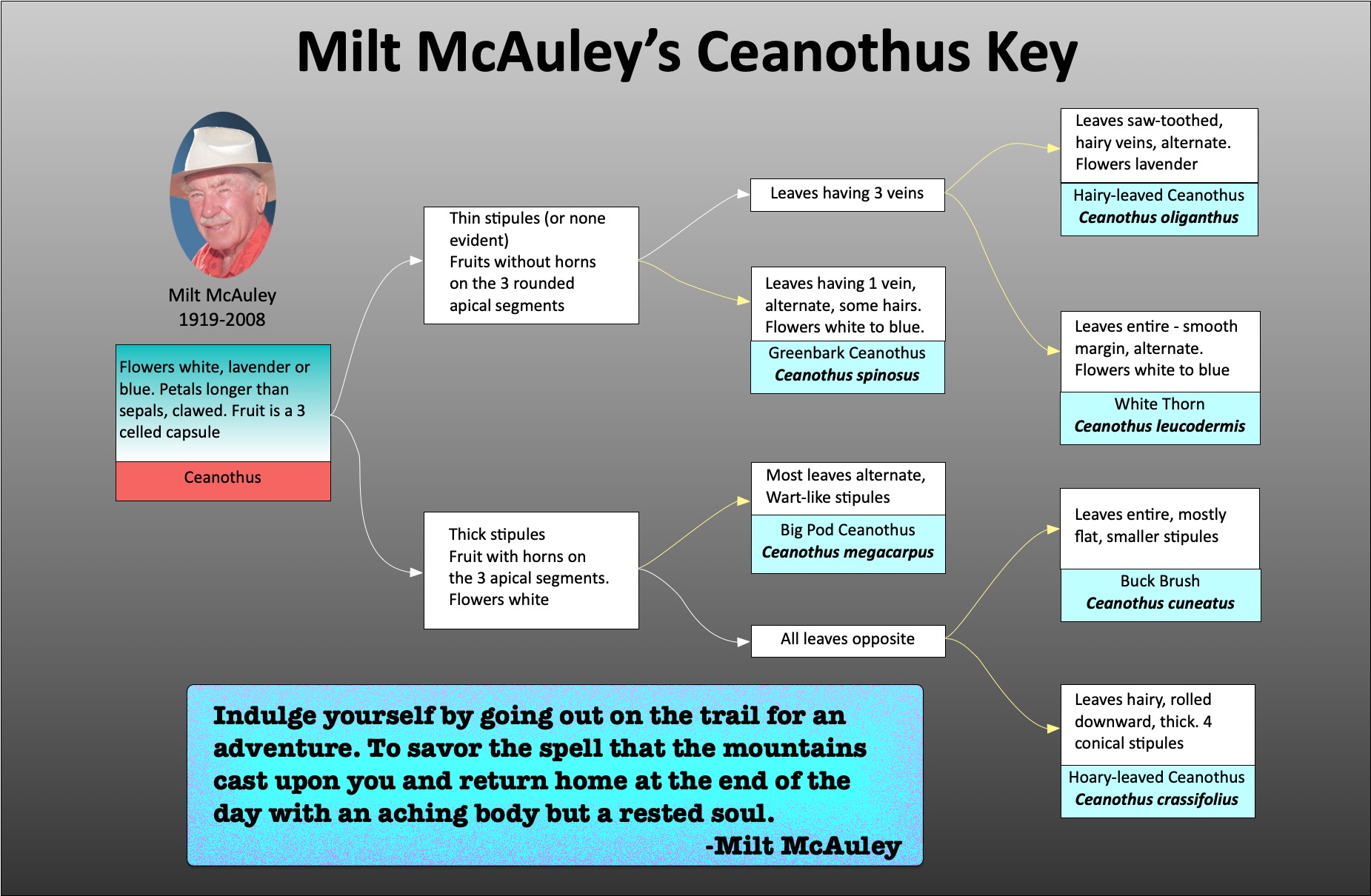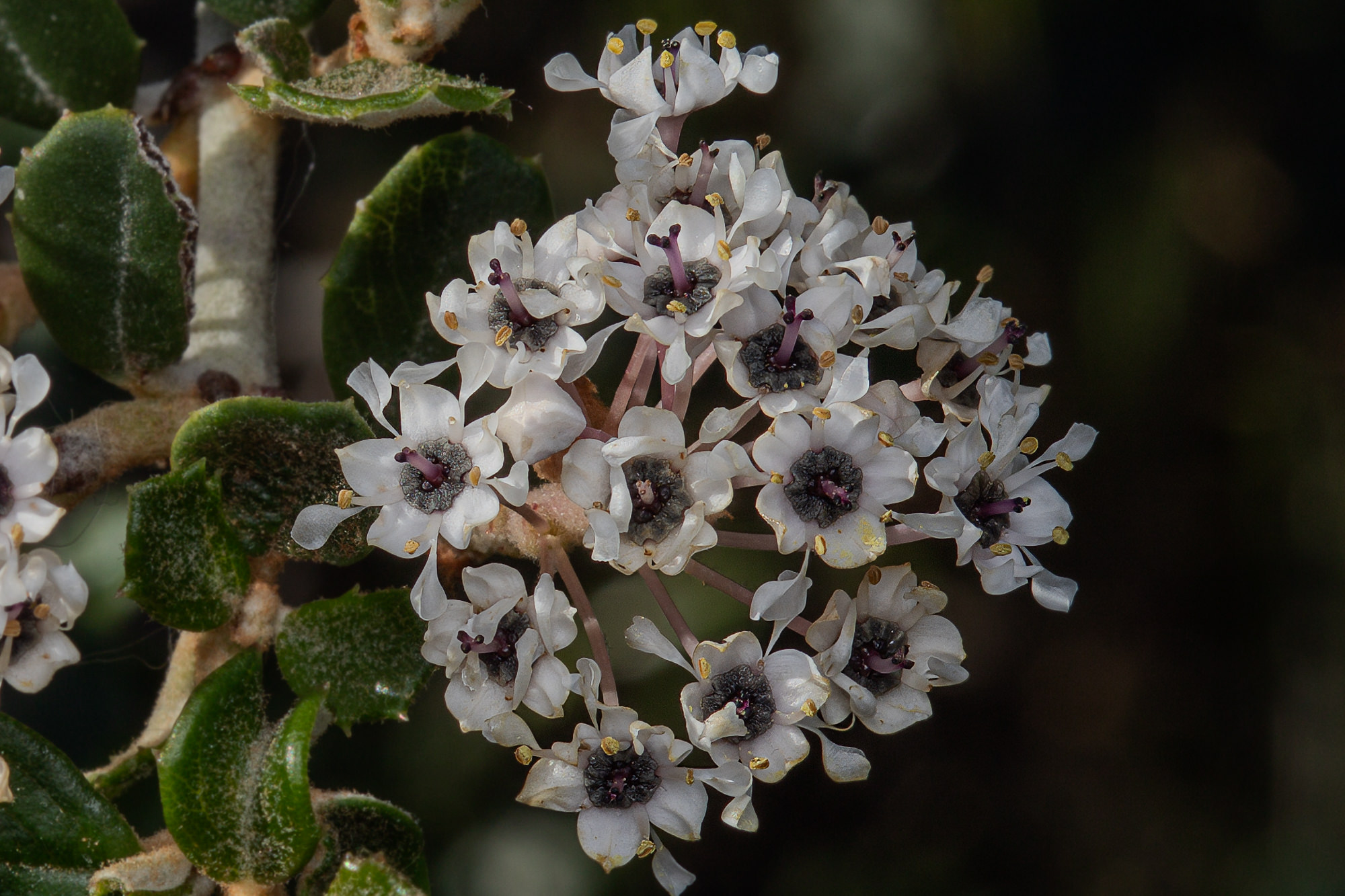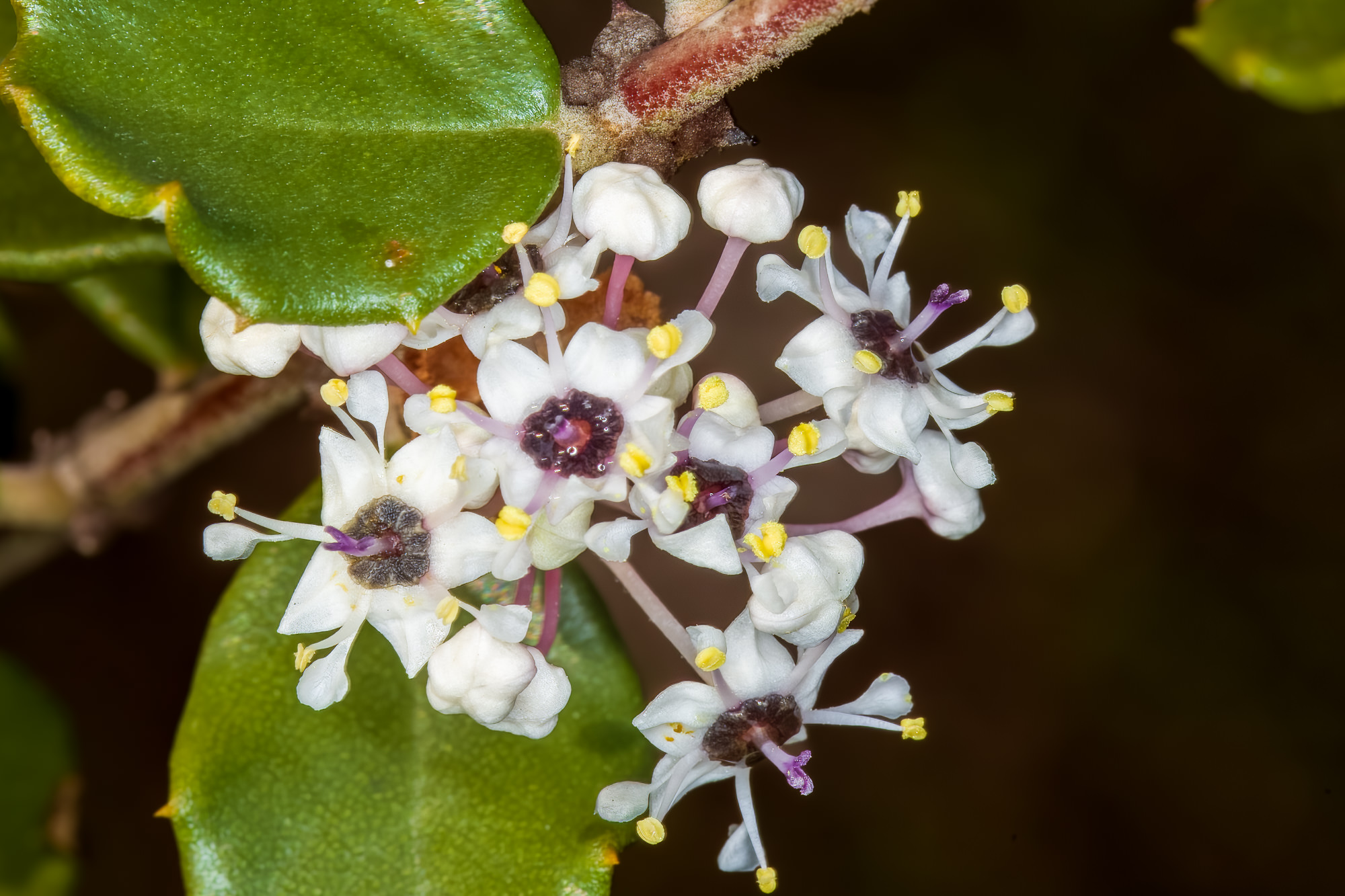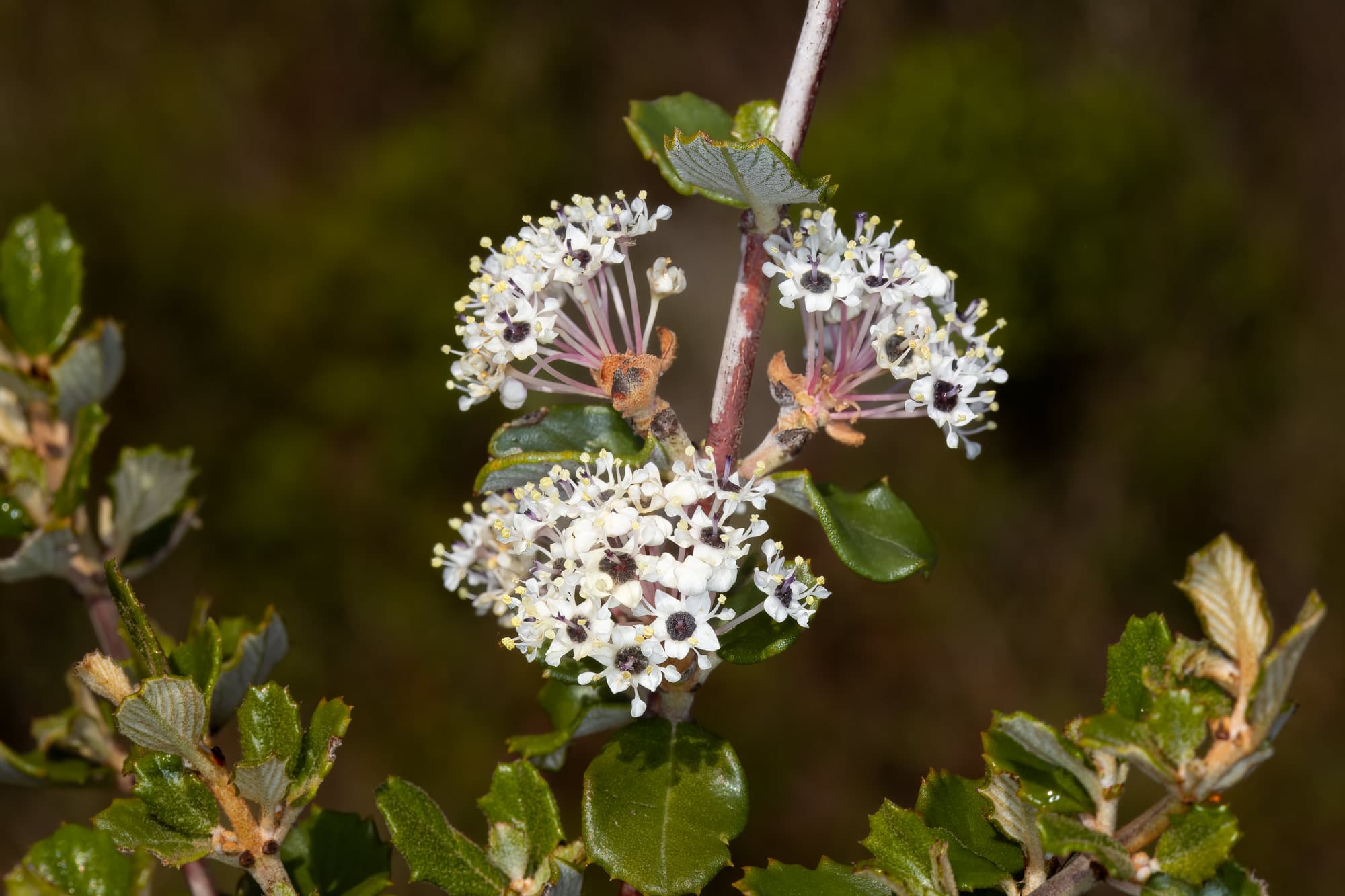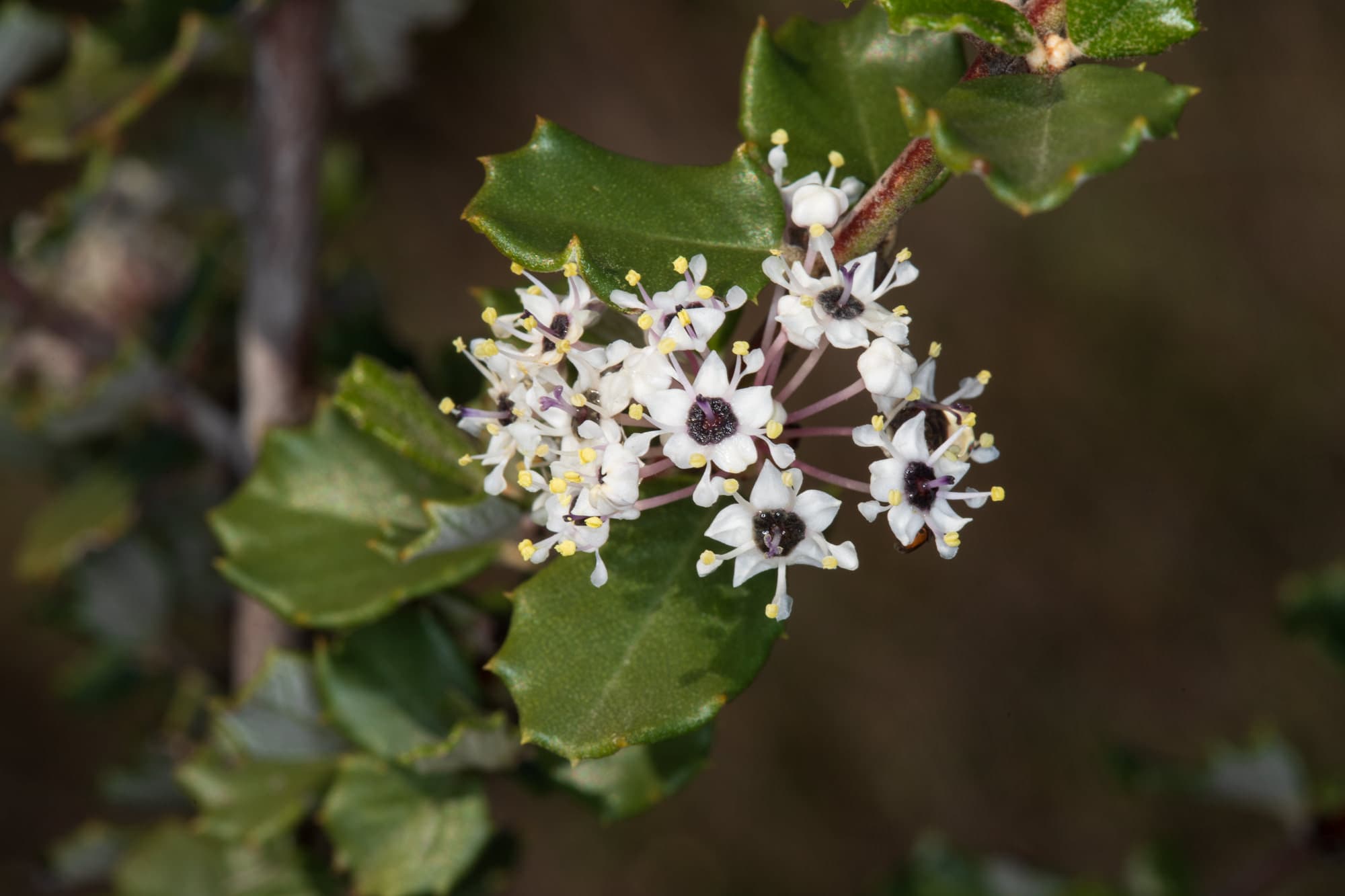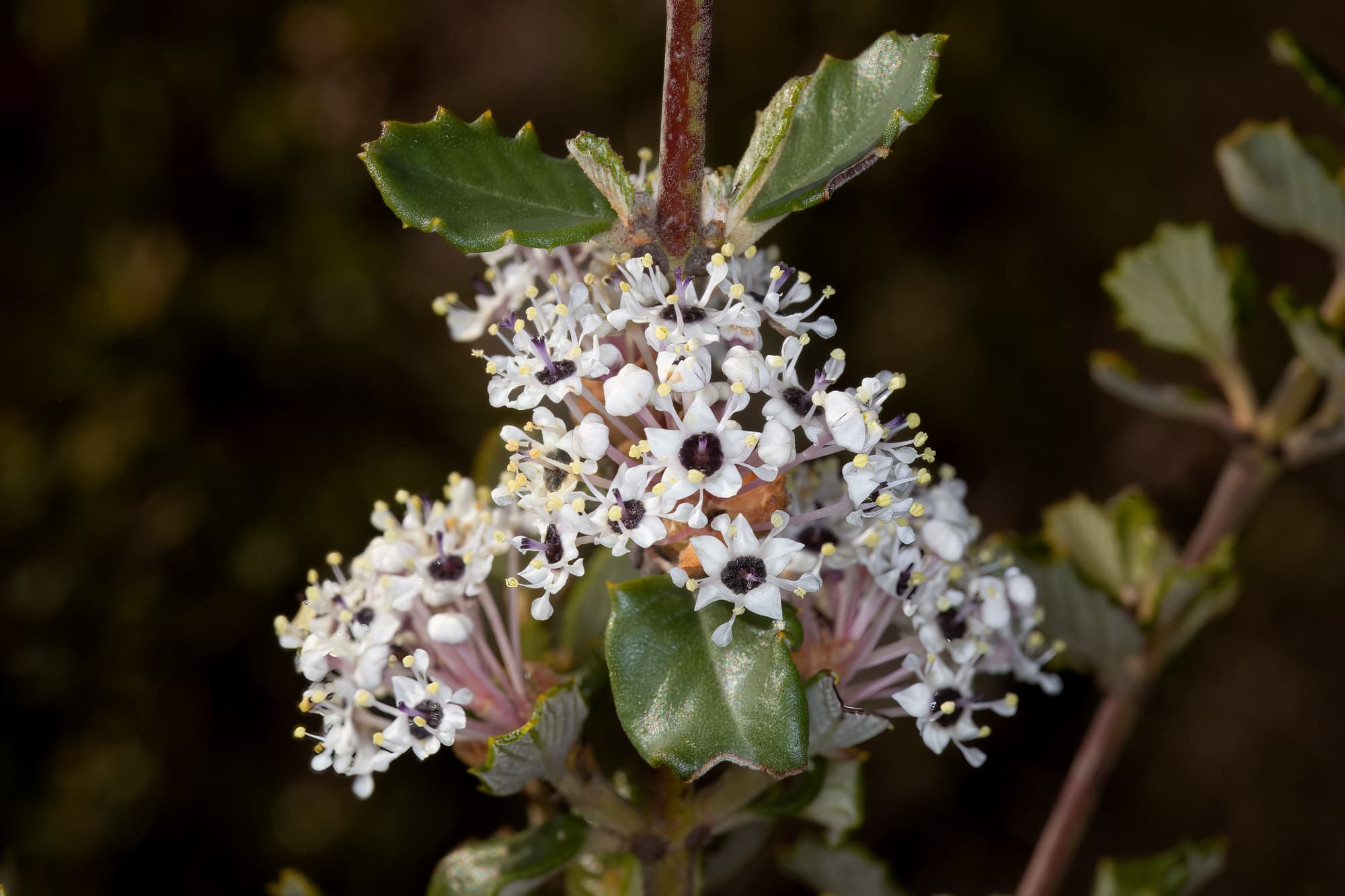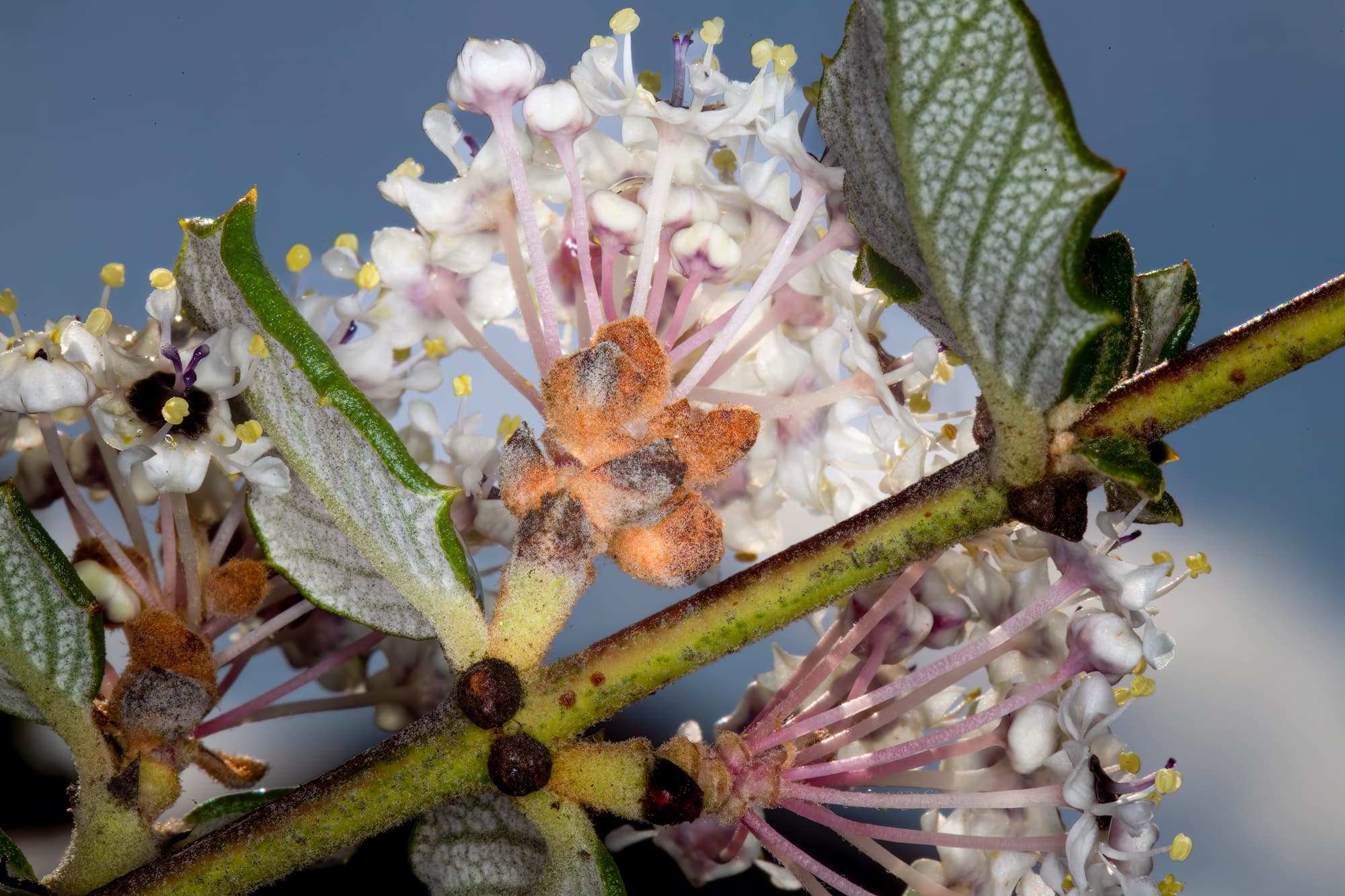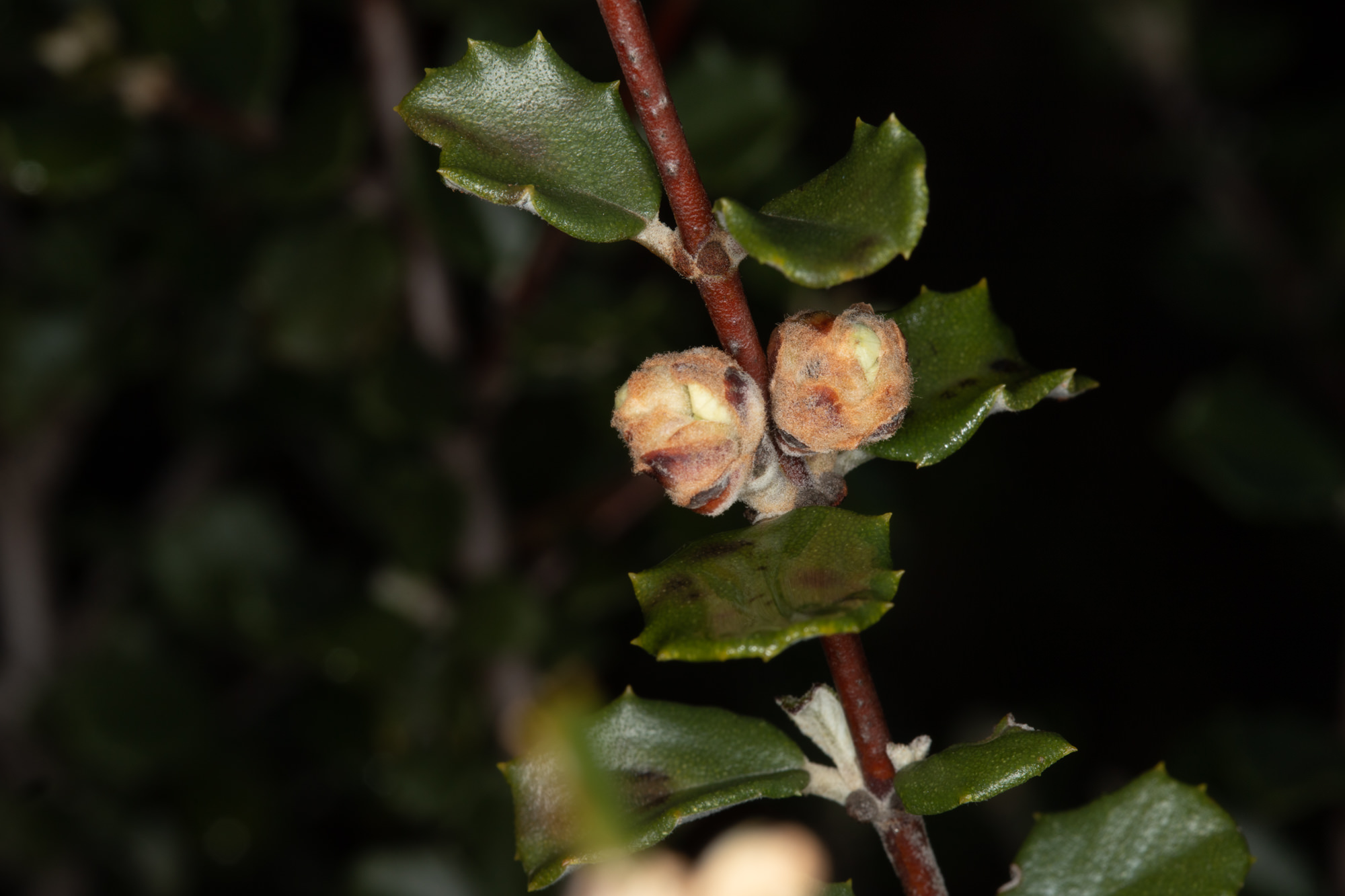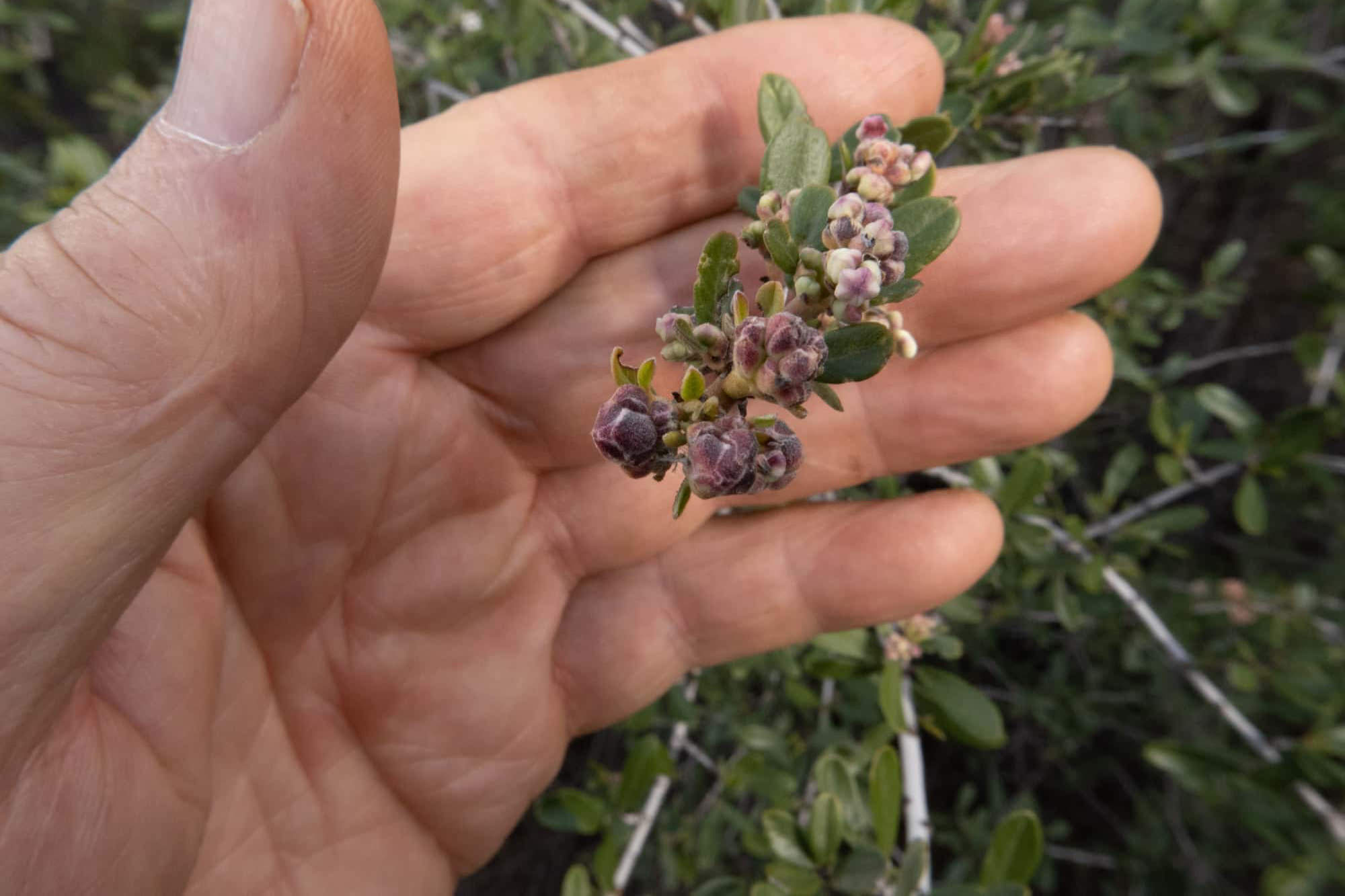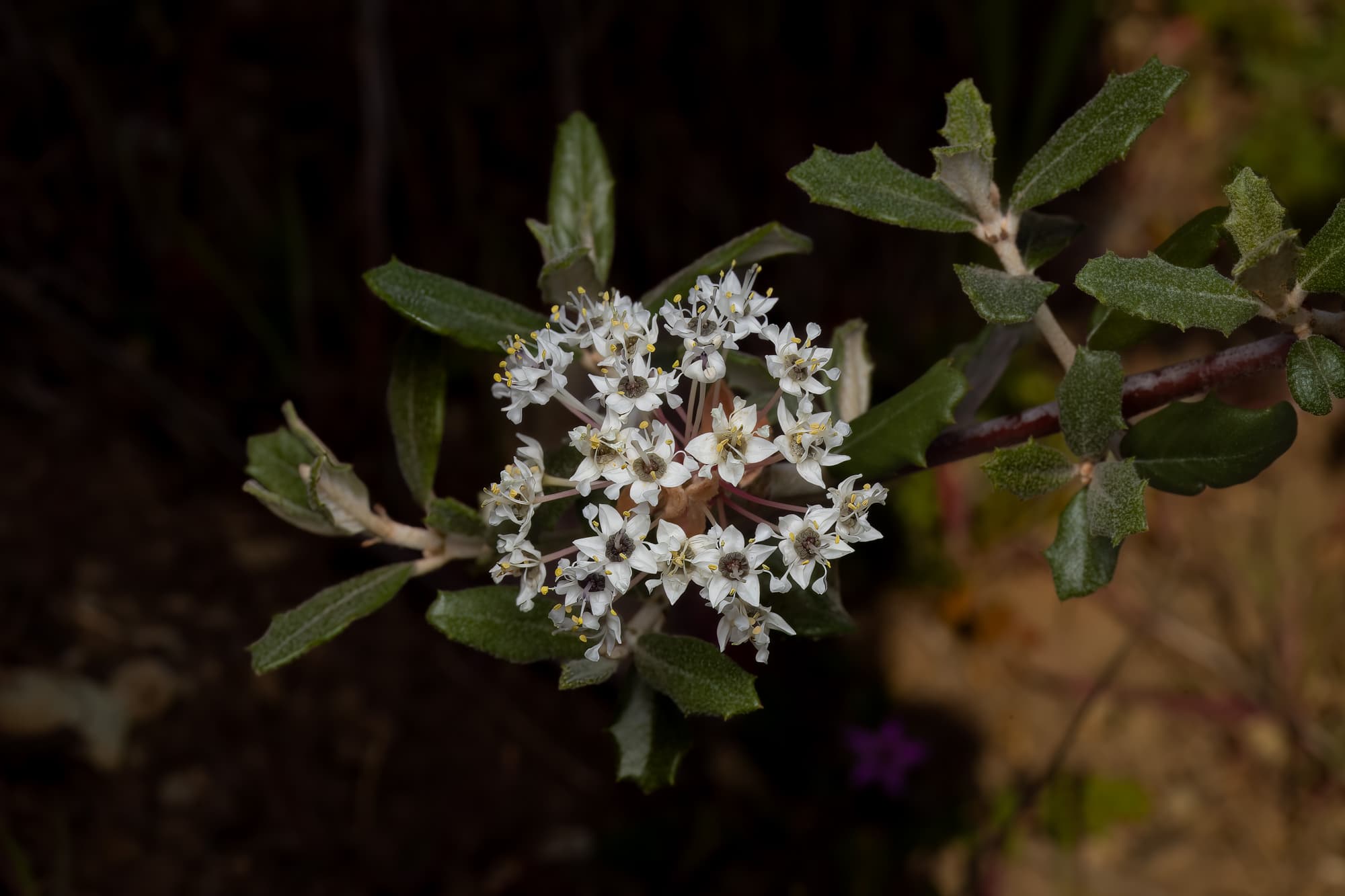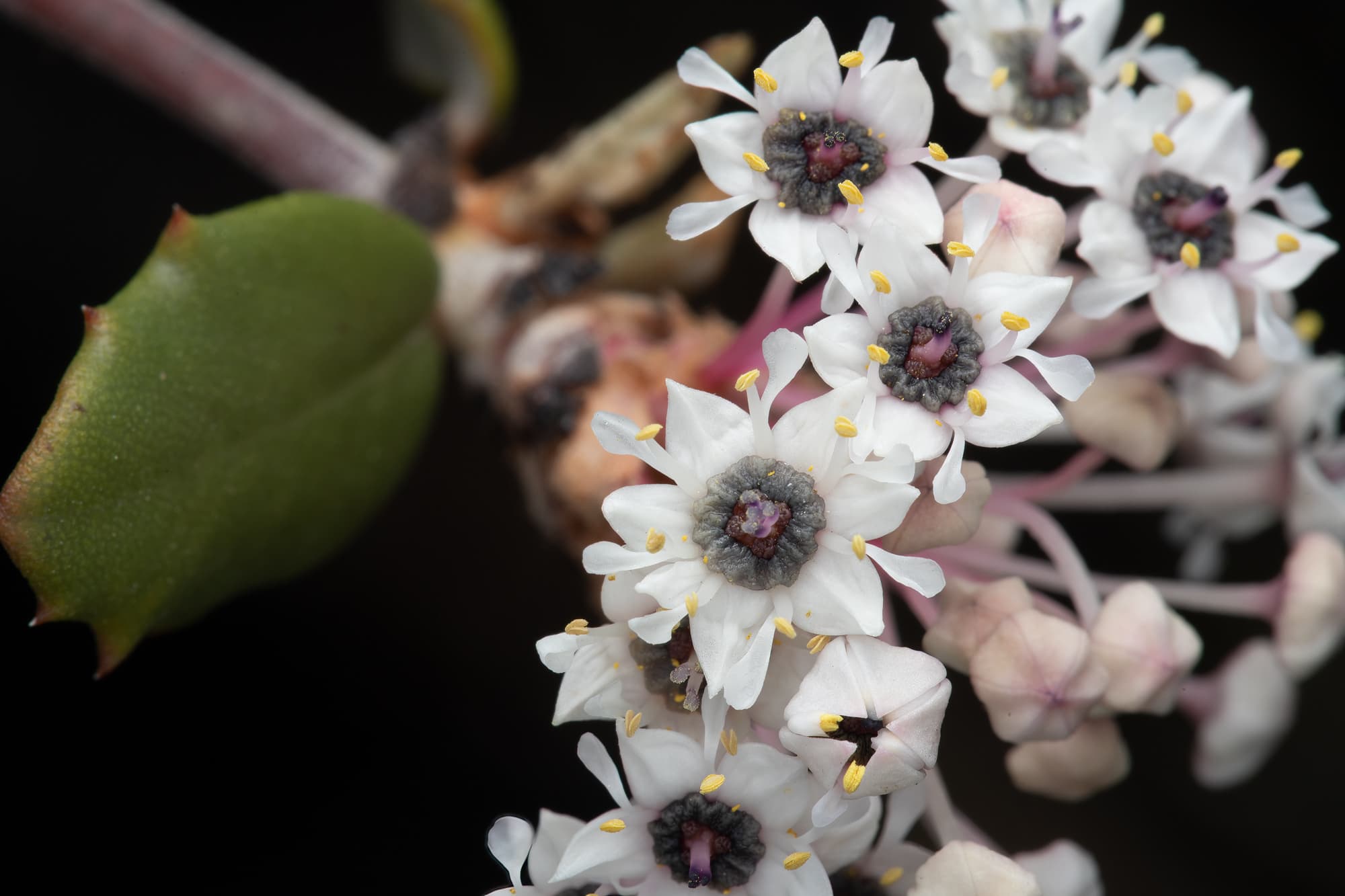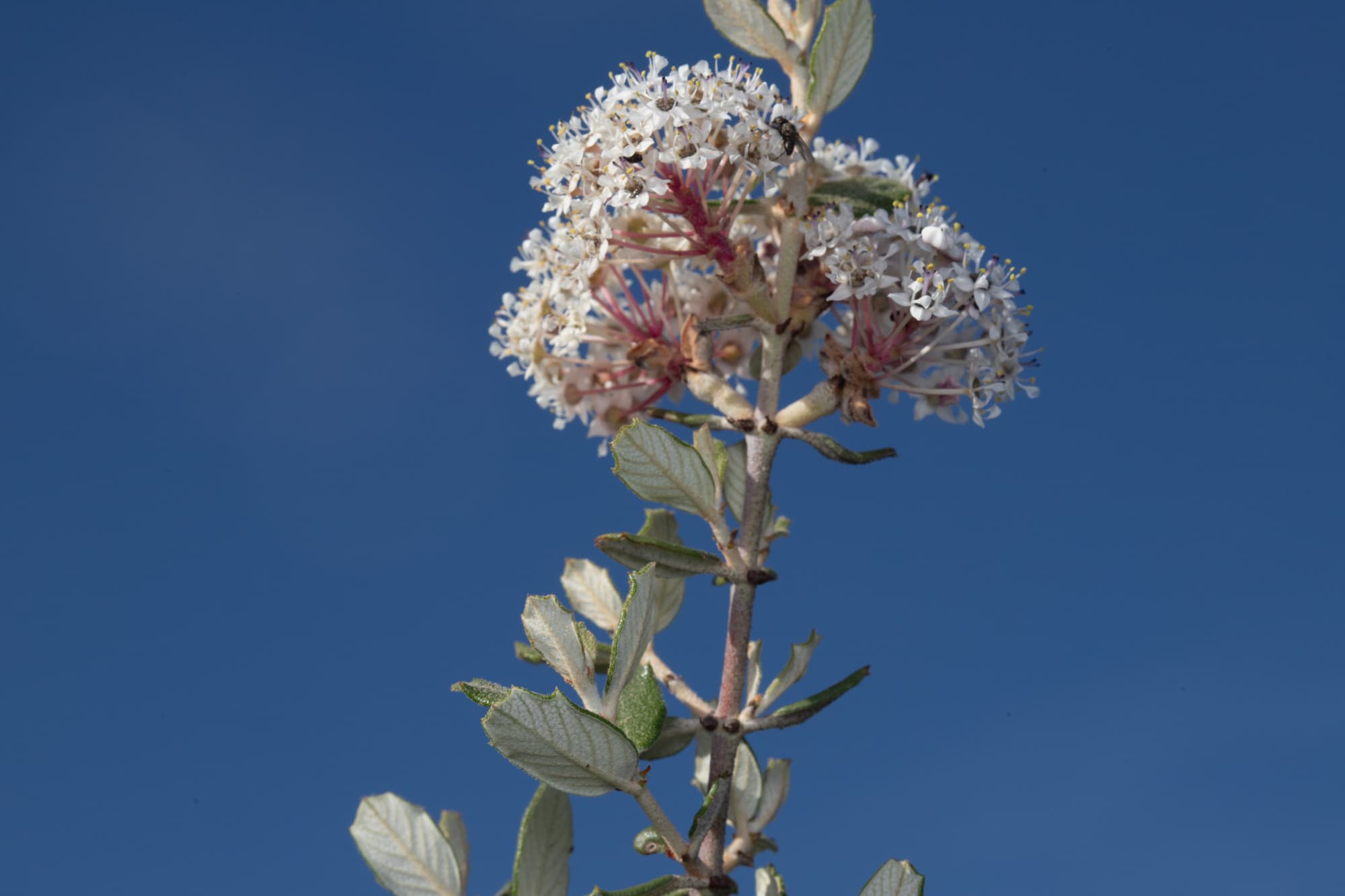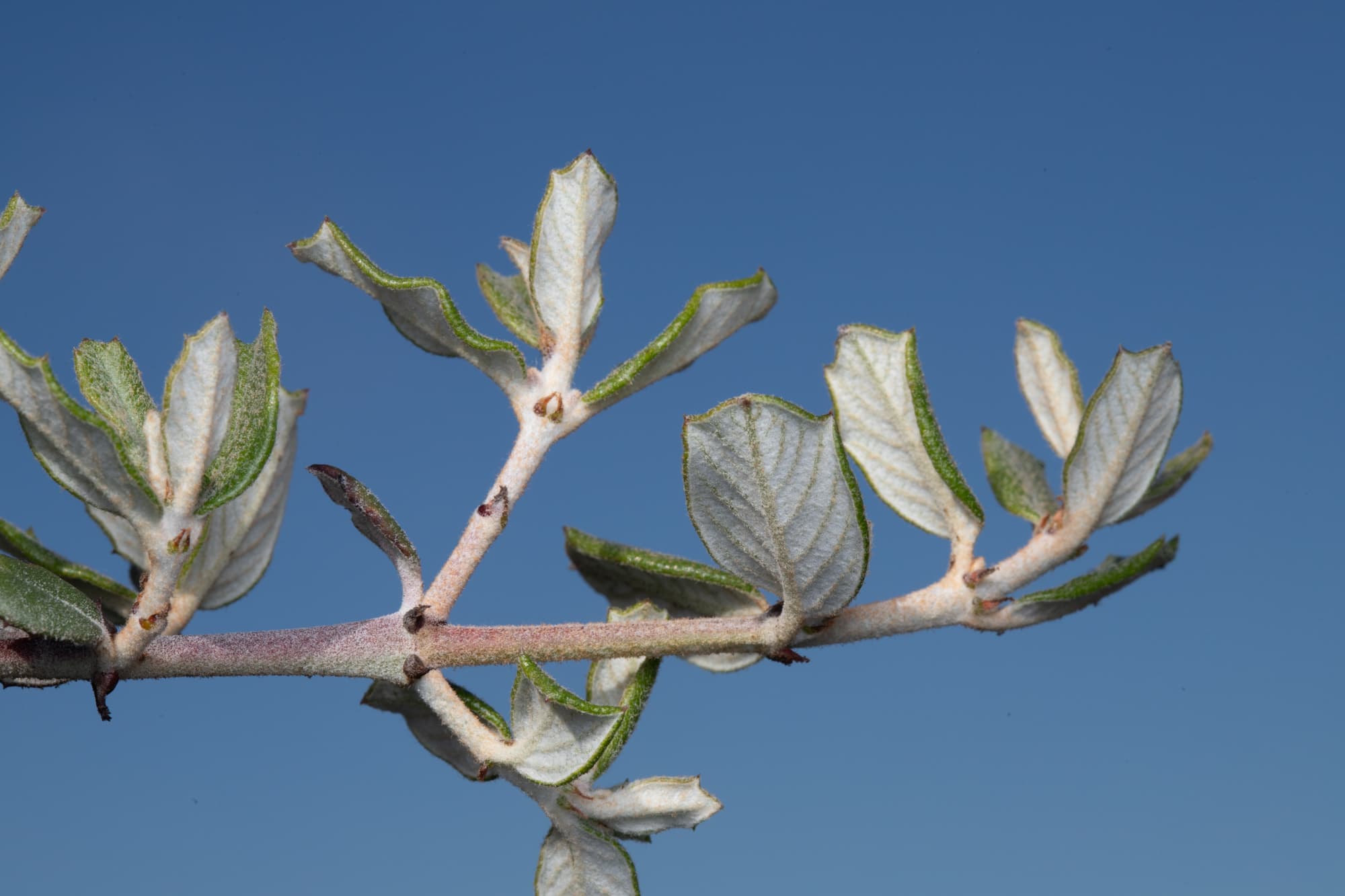Hoary Leaved Ceanothus
- Ceanothus crassifolius
| Common Name(s): | Hoary Leaved Ceanothus |
| Scientific Name: | Ceanothus crassifolius |
| Family: | Rhamnaceae (Buckthorn) |
| Plant Type: | Shrub or Tree |
| Size: | up to 13 feet |
| Habitat: | Chaparral |
| Blooms: | February to April |
| Fire Response: | Germinate from Seed |
Hoary-Leaved Ceanothus Ceanothus crassofolius covers many a slope in the Santa Monica Mountains. In the spring, when Ceanothus is blooming, our slopes can appear to be covered in snow from the multitude of tiny flowers produced by this shrub. Ceanothus shrubs of the same species in an area tend to bloom at the same time and when they do, it is apparent how much of the slope they occupy. Ceanothus crassifolius is endemic to southern California’s Transverse Ranges - including the Channel Islands.
Ceanothus crassofolius is an evergreen shrub that can reach 4 meters (13 feet) in height. This species is not as drought resistant as the C. megacarpus variety. The production of seeds begins about 5 years after germination. The fruit of this shrub is a capsule containing seeds. These seeds can be explosively propelled away from the parent plant however, most seeds simply drop beneath the plant. Small mammals and insects consume seeds but the seed output is sufficient enough to collect in the leaf litter and soil to form a persistent seed bank. This is important because the plant cannot sprout from a stump after a fire and can only produce the next generation by germination of its seeds.
When identifying this plant, I look for the stipules - leaflike appendages at the base of a leafstalk - C. crassofolius have paired thick conical shaped stipules. Leaves are mostly opposite. A similar Ceanothus Canothus megarcapus has leaves that alternate along stems. Leaves can be described as rigid, single veined from base, with thick usually revolute (rolled under) margins and the leaf underside is lighter in color. The plant tends to be more upright than C. megacarpus. The flowers are visually similar to the other Ceanothus species - it is very difficult to make an id on the flowers alone when the leaves and stalks make it much easier to do.
Link to Calflora.net - the best source of this fascinating information
Name Origin: Ceanothus: from the Greek keanothus, a name meaning thistle or spiny plant which was applied by Theophrastus and/or Dioscorides to an Old World plant believed by some to have been Cirsium arvense, and reused by Carl Linnaeus when he published it in 1753.
crassifolius: large fruited
Contributed by George Sherman
Source:Even More Info
Featured Plants in the Rhamnaceae (Buckthorn) Family:
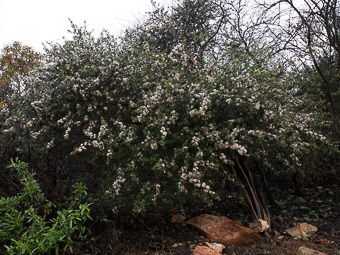
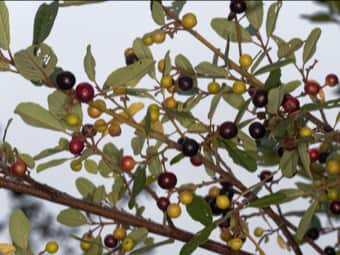
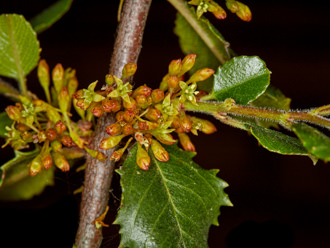
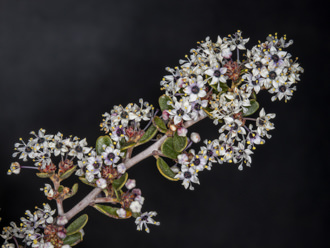
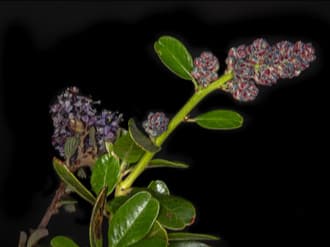
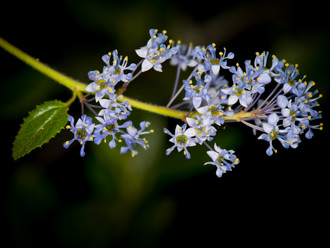
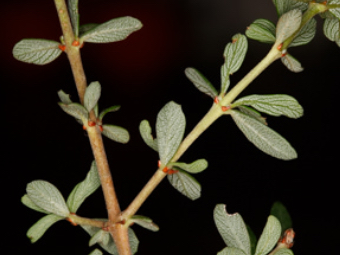
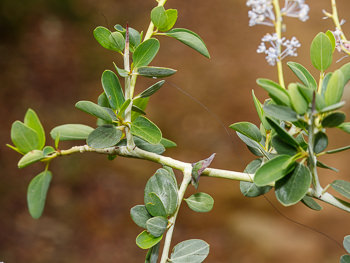
Last modified: August 21 2024 15:18:55.
Number of Images: 13
Image Size Total: 3,026,479
References:
Wildflowers of the Santa Monica Mountains, by Milt McAuleyFlowering Plants: The Santa Monica Mountains, Coastal and Chaparral Regions of Southern California, by Nancy Dale
Chumash Ethnobotany: Plant Knowledge Among the Chumash People, by Jan Timbrook
Leaf Shapes Primer - Botanical Terms for Leaves: - Link
